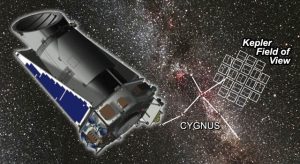Among the successes of NASA’s (National Aeronautical & Space Administration) Apollo program, there are a number of failures. I hope that this can enlighten the readers as to the low points of the Apollo Program. Apollo 13 became one of the most infamous missions in the program due to the dramatization of the events in the 1995 film, “Apollo 13”. Unfortunately, Apollo 13 was not the first failure of the Apollo program. Apollo 1 experienced an onboard fire while conducting simulated pre-flight checks on January 27, 1967. All 3 crew members died as a result of the accident. Following an investigation into the fire, the Command Module underwent numerous safety advancements. This was a tremendous set back for the program, and the following five missions were reduced to unmanned missions to allow for proper testing of the new command module design.
Voice recording of Commander Gus Grissom during the fire on board Apollo 1 (viewer discretion is advised)
Three years later on April 11, 1970, Apollo 13 was preparing to launch to the Moon at 1313hrs (1:33 pm). Soon after it would enter the moon’s gravity on April 13. Coincidence or not, the number thirteen seemed to be a theme for the crew of the Apollo 13. Two days into their mission to the Fra Mauro Highlands an explosion in Oxygen tank 2 led to a temporary system failure and forced the crew to power down the command module (spaceship) and transfer to the lunar module (moon lander). This meant that the lunar landing aborted and the Apollo 13 crew would be on a return trajectory back to Earth.
Let us return back to Apollo 1 to consider the changes made in the design of the Command Module. Well, what did we learn from this event? Many lessons were noted that fateful day. For starters, the cabin atmosphere was reduced from 100% oxygen to a 60% oxygen and 40% nitrogen mix. For those who are unaware, pure oxygen is extremely flammable and NASA was welcoming a disaster with open arms. All flammable materials used in the construction were replaced with the self-extinguishing versions and all plumbing was insulated. In the redesign of the command module, the escape hatch was redesigned to allow outward opening in the event of an emergency. Since the pressure inside the pressurized cockpit is greater than external atmospheric pressure the hatch would always open outward with ease. An oversight that doomed the crew of Apollo 1.
Now carrying on to Apollo 13’s successful failure. Moments after recycling their oxygen tanks, a large bang was heard and communications were lost momentarily. Apollo 13 had experienced an explosion and was losing oxygen fast. Fortunately, through the collaboration of engineers and scientists, the crew was brought back to Earth safely in what has been described as NASA’s finest hour. Unlike Apollo 1, the lessons learned by Apollo 13 were not necessarily mechanical. Experience, training, communication and risk management is what saves lives
The horizon of manned space flight is bright as we move forward into the future. We must reflect on the past as to not repeat our failures.
Author: Ryan Berg




